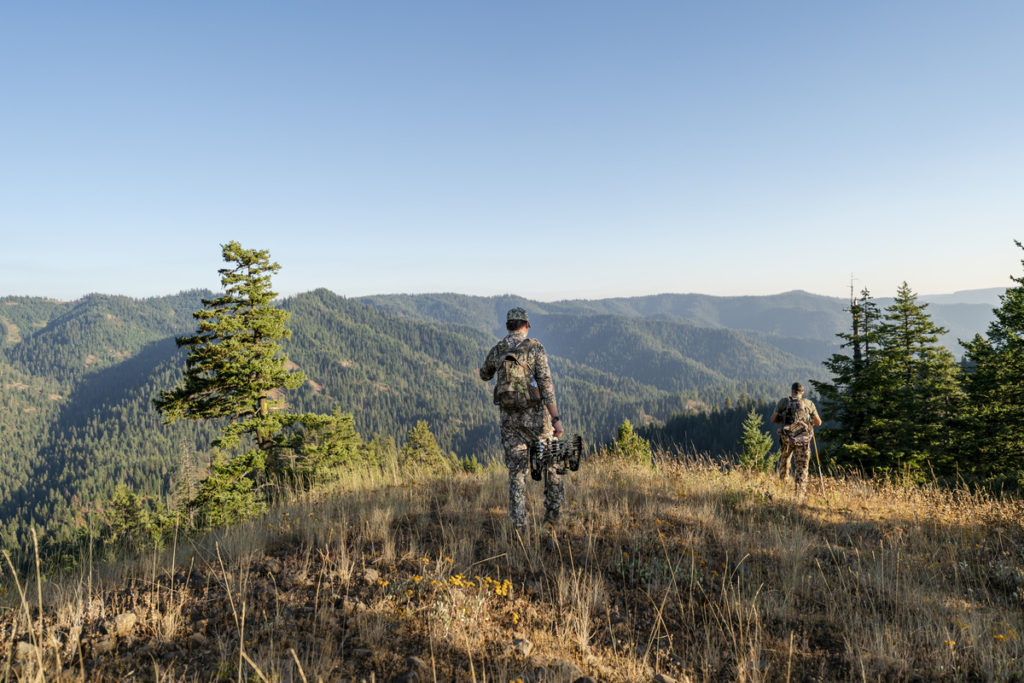No products in the cart.

Public hunting land or private hunting land? Which is better?
Great hunts aren’t solely dependent on private land. And hunting on public land doesn’t mean you won’t see any deer or elk. Thorough planning and preparation combined with patience, skill and a dash of luck make for a rewarding hunting trip.
You can end a trip triumphant no matter your location. However, hunting on private property is different from hunting on public land. Plan for success and learn what to expect from each place.
Many national parks, wildlife refuges, Bureau of Land Management areas and state forests allow hunting and fishing.
The amount of public and private land varies by state. Out West, large percentages of land are public. Almost 80% of the land in Nevada and 63% of the land in Utah is owned by the federal government.
States outside of the West have fewer government-owned acres. For example, over 93% of land in Missouri is privately owned. With less public land, it can be harder to find places to hunt.
Where should you hunt? And what should you expect when you get there?
Keep reading to discover key differences between private and public hunting land.
Private land is just that: private. Hunting on private property lessens competition from other hunters. Landowners limit how many hunters they let access the property or the number of guided hunts they schedule.
Fewer disturbances and run-ins with people help animals act naturally. With fewer people around, you may be more likely to locate and harvest game on private hunting land.
You have competition from others on public land. Public hunting areas are often crowded, affecting the animals’ behavior. Too many people increases hunting pressure, causing animals to change patterns.
On public land, deer hunting can be a greater challenge. Deer move away from areas with heavy hunting pressure. You only know how much pressure they’ve experienced after you’ve already arrived.
Private land is advantageous since fewer hunters disturb the area. However, you can still be successful on public hunting land. Before you set out, you should research the area and create a strategy for your hunt.
Deer hunting on private land gives you more opportunities to harvest better bucks. Animals have the chance to mature on private hunting land. If you’re lucky, you may find a property that deer call home year-round.
Since fewer hunters are on private land, you can be selective about which animals you target. Young bucks have time to reach maturity with only a few people around. When you pass on a younger buck, you give yourself the chance to harvest a bigger buck in the future.
The opposite is true on public hunting land. Younger bucks and bulls are often targeted because there’s more competition from other hunters.
You can find the best hunting spots on private property. Only you—and maybe a few others—have access to the land. The best ground and cover is yours.
Public hunting areas challenge you to find undisturbed copses or hidden travel corridors. Those secret spots? They aren’t secret anymore.
With modern technology, anyone can explore and map out public land online. Google Maps, Google Earth and other resources help you see terrain and land features from your living room.
A Penn State University study tracked deer hunters on public lands. Researchers found that 73% of deer hunters in the Sproul State Forest went no farther than 650 yards from the road. In another public hunting area, the Tuscarora State Forest, 79% of hunters remained 650 yards from the road.
What does this study tell us about public hunting land? The number of hunters decreases the farther you get from the main roads.
This study speaks to one of the difficulties of hunting on public land: recovering game. Public hunting areas may force you to go where others are not—farther in. Yet, venturing too far makes it hard to harvest and haul everything back.
Often, public lands don’t let you use ATVs or UTVs to get around. Backpacks, game carts or sleighs in snowy areas are what you’ll use to haul animals from remote places.
You won’t have to go out as far on private land. Once you need to retrieve an animal, the landowner may help out or permit you to drive through the property. Always ask the property owner what they prefer.
Public hunting land is free and available to all. You will need a permit or license first. Once you have one, you can hunt on public lands during open seasons.
It’s more challenging to find private hunting land. You’ll need to connect with a landowner and likely pay leasing fees to hunt on the property. You can also pay for guided hunting trips on land owned by an outfitter.
Hunters can find property leases by scanning the newspaper, joining local Facebook groups or going door to door to ask neighbors. Finding private property the traditional way takes a lot of legwork. Asking around doesn’t often produce quick results.
If you want to hunt this season, browse online listings at HUUNT! Find private land to hunt on or book guided hunting trips. We help you get outdoors and plan your next epic hunting experience.
Sign up today to find your adventure. Once you see an opportunity that suits you, all you have to do is book it! Then request your vacation days.
We make it simple to list and lease land, book guided hunts and more. Find your next hunting spot or guided trip. Earn extra income by letting others enjoy your land. HUUNT helps you make the most of every opportunity. Become a member today!